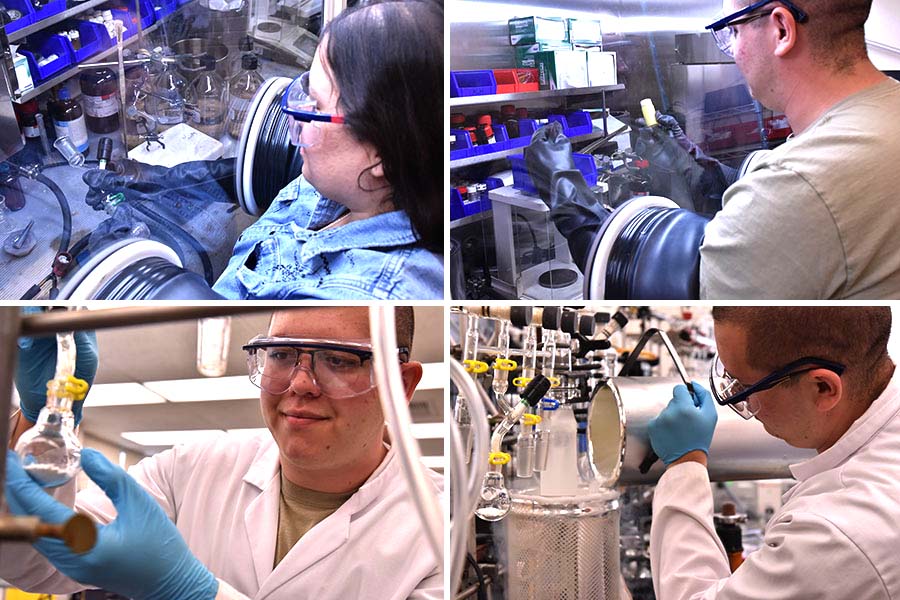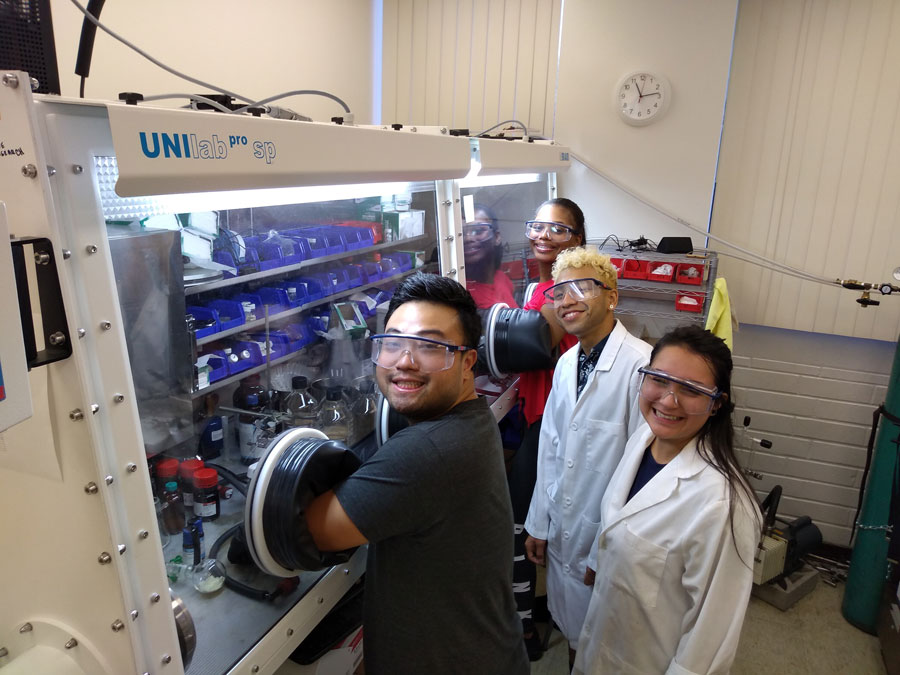NSF Career Grant Fuels Green Chemistry Research

Assistant Professor Chantal Stieber from the Department of Chemistry and Biochemistry received a National Science Foundation CAREER grant of $475,000 which is a highly competitive grant for pre-tenure faculty to integrate research and teaching. The grant term is five years and will fund a project called Quantifying Nitrogen-Oxide Activation and Coordination Modes through Synthesis, Spectroscopy and Computations.
The long-term goal of this research is to remove pollutants from the environment and use them as feedstocks in chemical synthesis for pharmaceuticals or making plastics. Most pollutants like carbon dioxide, carbon monoxide, nitric oxide or nitrous oxide aren’t very reactive, and scientists are still studying how to form new bonds with them.
“We’re studying transition metals used by biological systems in soil bacteria, such as nitric oxide reductases, and nitrous oxide reductases. Currently, we know the metals that facilitate the reactions, but we don’t know how they work,” Stieber said. “Our research is looking at both sides. How do the biological systems work and then how can we make something in the lab that mimics that?”
“To study the biological systems, we’re developing techniques that use X-rays to figure out the small steps that an enzyme goes through. Then there’s a synthetic component which involves making metal complexes that are bound to various pollutants so we can convert them into other products in the lab,” Stieber said.
The preliminary work that paved the way for the NSF grant was funded by a CSUPERB grant in 2016-2017, which allowed students to collect data at the Stanford Synchrotron Radiation Lightsource (SSRL) and resulted in 4 publications. CSUPERB is the Cal State University Program for Education & Research in Biotechnology, and the group’s research was highlighted in a recent CSU newsletter.
In 2018 Stieber led the acquisition of an X-ray diffractometer (XRD) for the college through a Department of Defense grant, which set the foundation for the educational component of her CAREER grant. The XRD is a $600,000 instrument that allows researchers to determine the three-dimensional atomic structure of a molecule. Stieber is working with colleague Kathryn McCulloch to incorporate the XRD into coursework across the chemistry curriculum. XRDs are seldom available to undergraduates, so it offers incredible new opportunities to CPP students in both classroom learning and research.
Stieber said, “We also used the XRD to characterize the structure of one of the new nickel complexes my students made. This is air-sensitive chemistry and requires an inert atmosphere glove box to keep air and moisture out, so it is typically difficult for undergraduates. We published a paper showing that undergraduates can make these complex new molecules, which strengthened the CAREER grant application.”
The NSF grant offers additional opportunities for students because it funds salaries so that students can earn money while gaining valuable experience conducting research in their field.
“Being able to work in Dr. Stieber’s lab has given me a sense of purpose. I started over the summer volunteering in the lab and now I’m getting paid. Knowing that this work is considered important enough to be paid for doing it is a big deal,” undergraduate Adrian Torres said.
There are over 15 students in Stieber’s lab and the NSF grant also provides money for students to travel to conferences and to the SSRL at Stanford to collect synchrotron data. The synchrotron is also an X-ray source, and is used for other experiments that cannot be done with our XRD. “The XRD requires a crystalline material but for a lot of proteins and enzymes a crystal is hard to grow. Our work is developing new X-ray techniques to characterize these types of systems.” said Stieber.
Stieber said, “What we’re doing is called small molecule activation. Adding another bond to some of these diatomic molecules is quite difficult; however, some of my students have demonstrated the feasibility of being able to add other atoms to nitric oxide. Now we have to characterize the products and publish our findings.” As for Torres, he is interested in the environmental aspect of the work and hopes to get a Ph.D. Torres said, “I’m applying the knowledge I gained in the classroom and that really helps me understand what I’m learning. I’m also a first-generation college student from a low-income background and the support has been very important to me.”

